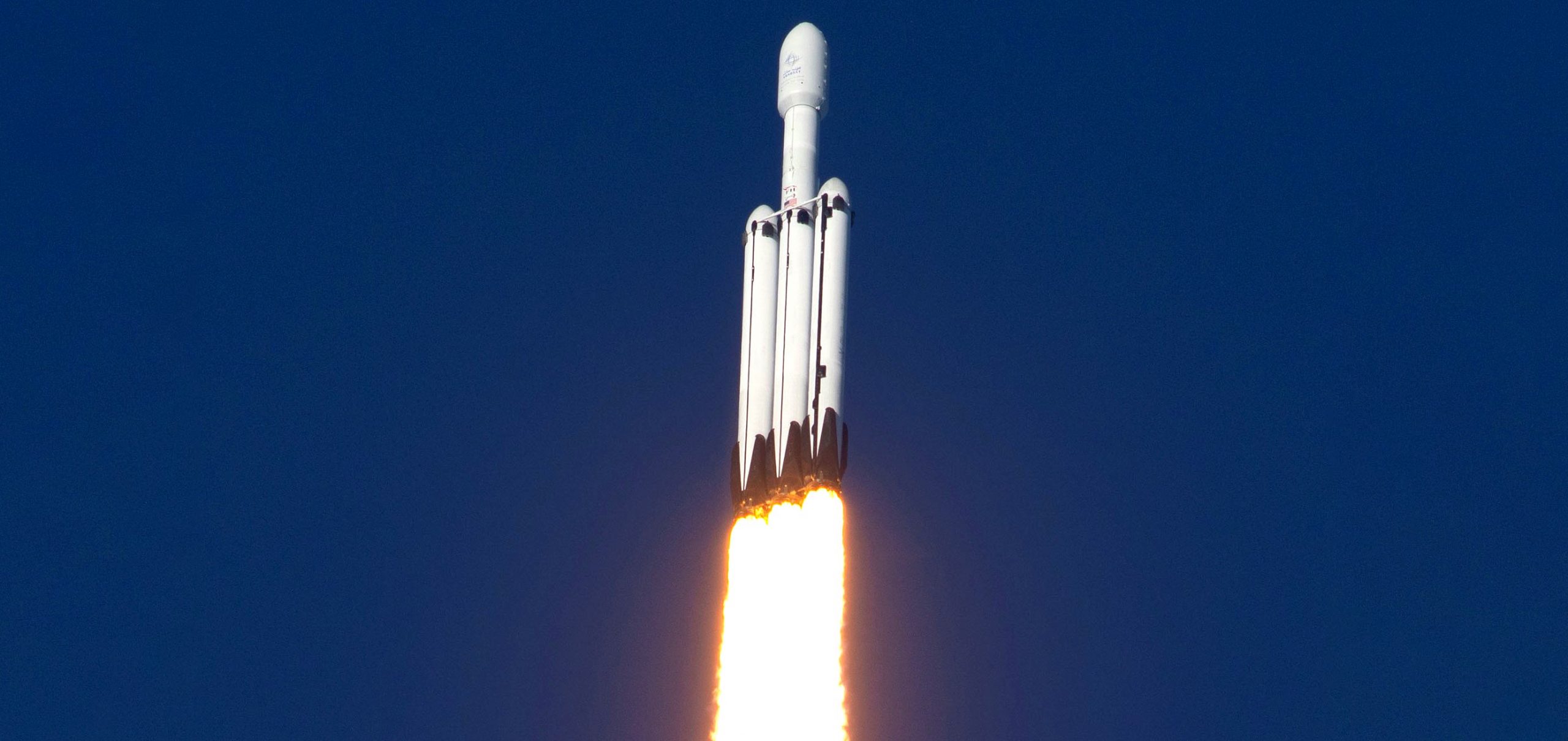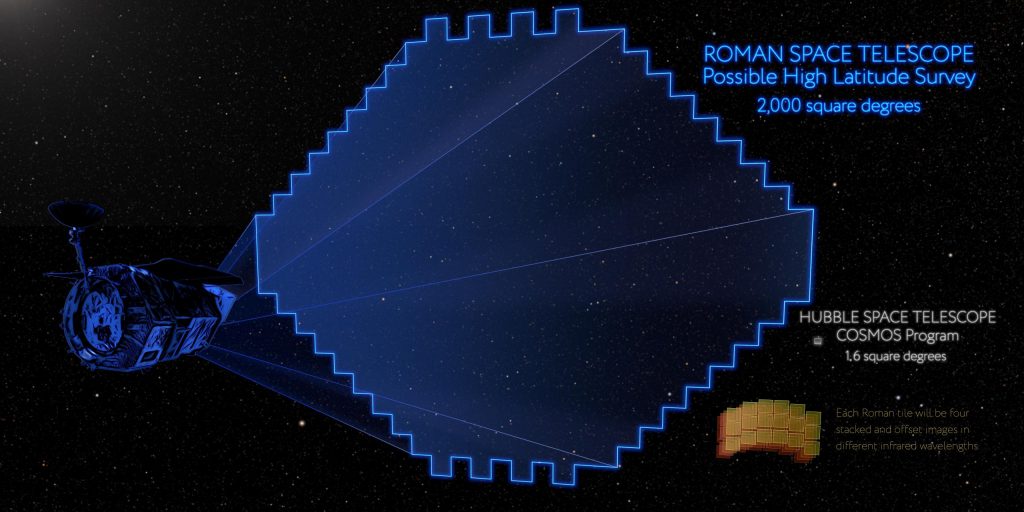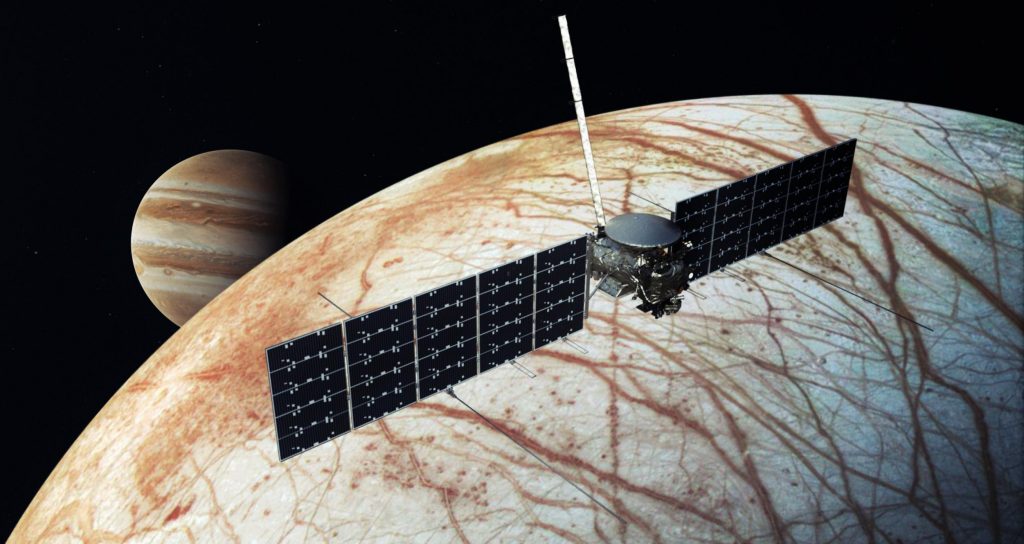

News
SpaceX’s Falcon Heavy likely to launch NASA telescope after ULA skips competition
On the heels of what will likely be NASA’s most significant telescope launch for at least a decade, the space agency appears to be about to select the launch provider for its next most expensive space telescope – a contract that SpaceX seems all but guaranteed to win.
Tory Bruno, CEO of the United Launch Alliance (ULA), revealed on February 15th that SpaceX’s chief competitor won’t even attempt to compete for the contract to launch NASA’s Nancy Grace Roman Space Telescope (NGRST; formerly the Wide-Field Infrared Survey Telescope or WFIRST). Named after Nancy Roman, who played a foundational role in the creation and launch of NASA’s famous Hubble Space Telescope, the Roman Space Telescope could potentially be the second most expensive NASA spacecraft launched this decade.
WFIRST was made possible when the US National Reconnaissance Office (NRO) chose to donate one of two Hubble-class spy telescopes it had merely sitting around and gathering dust to NASA in the mid-2010s. From a mechanical perspective, the telescope will be very similar to Hubble. However, in the decades since HST’s launch, electronics and sensor technology have dramatically improved, allowing NASA to pack instruments capable of simultaneously imaging 100 times the field of view HST is capable of into a similar package.
Additionally, instead of the Hubble’s primary focus on ultraviolet and visible wavelengths, the Roman Space Telescope will observe in infrared wavelengths, making it a perfect complement to the brand-new James Webb Space Telescope (JWST), which is also exclusively focused on the infrared spectrum. Combined, they could operate hand in hand, with NGRST acting like a surveyor or scout and JWST enabling a much closer look at noteworthy discoveries. Additionally, thanks to the inclusion of an unprecedentedly capable in-space coronagraph instrument, NGRST will be able to block out the light of stars, making it a game-changing tool for exoplanet discovery – exoplanets that JWST may then be able to image in even more detail with its much larger mirror.

The telescope must first be built and then make it to orbit, however. Expected to weigh at least 4.2 tons (~9250 lb) and designed to operate at the L2 Sun-Earth Lagrange point hundreds of thousands of miles from our planet, only large American rockets are an option for the $4.3 billion Roman Space Telescope’s launch. After a recent delay, that launch has slipped to no later than May 2027. However, NASA appeared to be in the final stages of selecting a launch provider as of late last month [PDF], meaning that the space agency may not be able to take advantage of potential launch options planned to debut over the next few years.
That includes Blue Origin’s New Glenn and Relativity Space’s Terran R. However, even ULA’s Vulcan Centaur rocket appears to have been precluded due to rules that generally mean that only rockets certified for NASA launches today can be awarded a contract to launch a high-value spacecraft. As such, while there is a good chance that one or all of the above rockets will have launched repeatedly and potentially achieved NASA LSP certification by 2027, they have little hope of winning a 2022 competition for a 2027 launch when facing a competitor with a rocket that’s already certified.

In this case, that competitor is SpaceX, whose Falcon Heavy rocket is certified for even the most risk-averse NASA LSP (Launch Service Program) missions. In just the last two years, SpaceX has won contracts to launch NASA’s Psyche asteroid explorer (Aug 2022), VIPER Moon rover (Q4 2023), GOES-U weather satellite (Q2 2024), Europa Clipper (Q4 2024), and the PPE and HALO modules of the Gateway lunar space station (Q4 2024). In fact, because ULA has already promised all of its remaining Delta IV Heavy and Atlas V rockets and because ULA’s Vulcan and Blue Origin’s New Glenn have yet to launch at all, SpaceX is actually the only US launch provider with rockets that are both available for future NASA launches and certified to launch and compete for them.
For some upcoming missions, it’s possible that NASA will wait much closer to the launch date in order to ensure a more competitive environment, but that’s not always possible if the design of an exceptionally sensitive payload (like a large space telescope) must be optimized for a specific vehicle. In the case of the Roman Space Telescope, that means that without a major departure from established rules and norms, SpaceX’s Falcon Heavy rocket is all but guaranteed to win the contract to launch it.
News
These Tesla, X, and xAI engineers were just poached by OpenAI
The news is the latest in an ongoing feud between Elon Musk and the Sam Altman-run firm OpenAI.

OpenAI, the xAI competitor for which Elon Musk previously served as a boardmember and helped to co-found, has reportedly poached high-level engineers from Tesla, along with others from xAI, X, and still others.
On Tuesday, Wired reported that OpenAI hired four high-level engineers from Tesla, xAI, and X, as seen in an internal Slack message sent by co-founder Greg Brockman. The engineers include Tesla Vice President of Software Engineering David Lau, X and xAI’s head of infrastructure engineering Uday Ruddarraju, and fellow xAI infrastructure engineer Mike Dalton. The hiring spree also included Angela Fan, an AI researcher from Meta.
“We’re excited to welcome these new members to our scaling team,” said Hannah Wong, an OpenAI spokesperson. “Our approach is to continue building and bringing together world-class infrastructure, research, and product teams to accelerate our mission and deliver the benefits of AI to hundreds of millions of people.”
Lau has been in his position as Tesla’s VP of Software Engineering since 2017, after previously working for the company’s firmware, platforms, and system integration divisions.
“It has become incredibly clear to me that accelerating progress towards safe, well-aligned artificial general intelligence is the most rewarding mission I could imagine for the next chapter of my career,” Lau said in a statement to Wired.
🚨Optimistic projections point to xAI possibly attaining profitability by 2027, according to Bloomberg's sources.
If accurate, this would be quite a feat for xAI. OpenAI, its biggest rival, is still looking at 2029 as the year it could become cash flow positive.💰 https://t.co/pE5Z9daez8
— TESLARATI (@Teslarati) June 18, 2025
READ MORE ON OPENAI: Elon Musk’s OpenAI lawsuit clears hurdle as trial looms
At xAI, Ruddarraju and Dalton both played a large role in developing the Colossus supercomputer, which is comprised of over 200,000 GPUs. One of the major ongoing projects at OpenAI is the company’s Stargate program,
“Infrastructure is where research meets reality, and OpenAI has already demonstrated this successfully,” Ruddarraju told Wired in another statement. “Stargate, in particular, is an infrastructure moonshot that perfectly matches the ambitious, systems-level challenges I love taking on.”
Elon Musk is currently in the process of suing OpenAI for shifting toward a for-profit model, as well as for accepting an investment of billions of dollars from Microsoft. OpenAI retaliated with a counterlawsuit, in which it alleges that Musk is interfering with the company’s business and engaging in unfair competition practices.
Elon Musk confirms Grok 4 launch on July 9 with livestream event
News
SpaceX share sale expected to back $400 billion valuation
The new SpaceX valuation would represent yet another record-high as far as privately-held companies in the U.S. go.

A new report this week suggests that Elon Musk-led rocket company SpaceX is considering an insider share sale that would value the company at $400 billion.
SpaceX is set to launch a primary fundraising round and sell a small number of new shares to investors, according to the report from Bloomberg, which cited people familiar with the matter who asked to remain anonymous due to the information not yet being public. Additionally, the company would sell shares from employees and early investors in a follow-up round, while the primary round would determine the price for the secondary round.
The valuation would represent the largest in history from a privately-owned company in the U.S., surpassing SpaceX’s previous record of $350 billion after a share buyback in December. Rivaling company valuations include ByteDance, the parent company of TikTok, as well as OpenAI.
Bloomberg went on to say that a SpaceX representative didn’t respond to a request for comment at the time of publishing. The publication also notes that the details of such a deal could still change, especially depending on interest from the insider sellers and share buyers.
Axiom’s Ax-4 astronauts arriving to the ISS! https://t.co/WQtTODaYfj
— TESLARATI (@Teslarati) June 26, 2025
READ MORE ON SPACEX: SpaceX to decommission Dragon spacecraft in response to Pres. Trump war of words with Elon Musk
SpaceX’s valuation comes from a few different key factors, especially including the continued expansion of the company’s Starlink satellite internet company. According to the report, Starlink accounts for over half of the company’s yearly revenue. Meanwhile, the company produced its 10 millionth Starlink kit last month.
The company also continues to develop its Starship reusable rocket program, despite the company experiencing an explosion of the rocket on the test stand in Texas last month.
The company has also launched payloads for a number of companies and government contracts. In recent weeks, SpaceX launched Axiom’s Ax-4 mission, sending four astronauts to the International Space Station (ISS) for a 14-day stay to work on around 60 scientific experiments. The mission was launched using the SpaceX Falcon 9 rocket and a new Crew Dragon capsule, while the research is expected to span a range of fields including biology, material and physical sciences, and demonstrations of specialized technology.
News
Tesla Giga Texas continues to pile up with Cybercab castings
Tesla sure is gathering a lot of Cybercab components around the Giga Texas complex.

Tesla may be extremely tight-lipped about the new affordable models that it was expected to start producing in the first half of the year, but the company sure is gathering a lot of Cybercab castings around the Giga Texas complex. This is, at least, as per recent images taken of the facility.
Cybercab castings galore
As per longtime drone operator Joe Tegtmeyer, who has been chronicling the developments around the Giga Texas complex for several years now, the electric vehicle maker seems to be gathering hundreds of Cybercab castings around the factory.
Based on observations from industry watchers, the drone operator appears to have captured images of about 180 front and 180 rear Cybercab castings in his recent photos.
Considering the number of castings that were spotted around Giga Texas, it would appear that Tesla may indeed be preparing for the vehicle’s start of trial production sometime later this year. Interestingly enough, large numbers of Cybercab castings have been spotted around the Giga Texas complex in the past few months.
Cybercab production
The Cybercab is expected to be Tesla’s first vehicle that will adopt the company’s “unboxed” process. As per Tesla’s previous update letters, volume production of the Cybercab should start in 2026. So far, prototypes of the Cybercab have been spotted testing around Giga Texas, and expectations are high that the vehicle’s initial trial production should start this year.
With the start of Tesla’s dedicated Robotaxi service around Austin, it might only be a matter of time before the Cybercab starts being tested on public roads as well. When this happens, it would be very difficult to deny the fact that Tesla really does have a safe, working autonomous driving system, and it has the perfect vehicle for it, too.
-

 Elon Musk1 week ago
Elon Musk1 week agoTesla investors will be shocked by Jim Cramer’s latest assessment
-

 News2 weeks ago
News2 weeks agoTesla Robotaxi’s biggest challenge seems to be this one thing
-

 Elon Musk1 day ago
Elon Musk1 day agoElon Musk confirms Grok 4 launch on July 9 with livestream event
-

 News2 weeks ago
News2 weeks agoWatch the first true Tesla Robotaxi intervention by safety monitor
-

 News5 days ago
News5 days agoTesla Model 3 ranks as the safest new car in Europe for 2025, per Euro NCAP tests
-

 Elon Musk2 weeks ago
Elon Musk2 weeks agoA Tesla just delivered itself to a customer autonomously, Elon Musk confirms
-

 Elon Musk2 weeks ago
Elon Musk2 weeks agoElon Musk confirms Tesla Optimus V3 already uses Grok voice AI
-

 Elon Musk2 weeks ago
Elon Musk2 weeks agoxAI welcomes Memphis pollution results, environmental groups push back

















